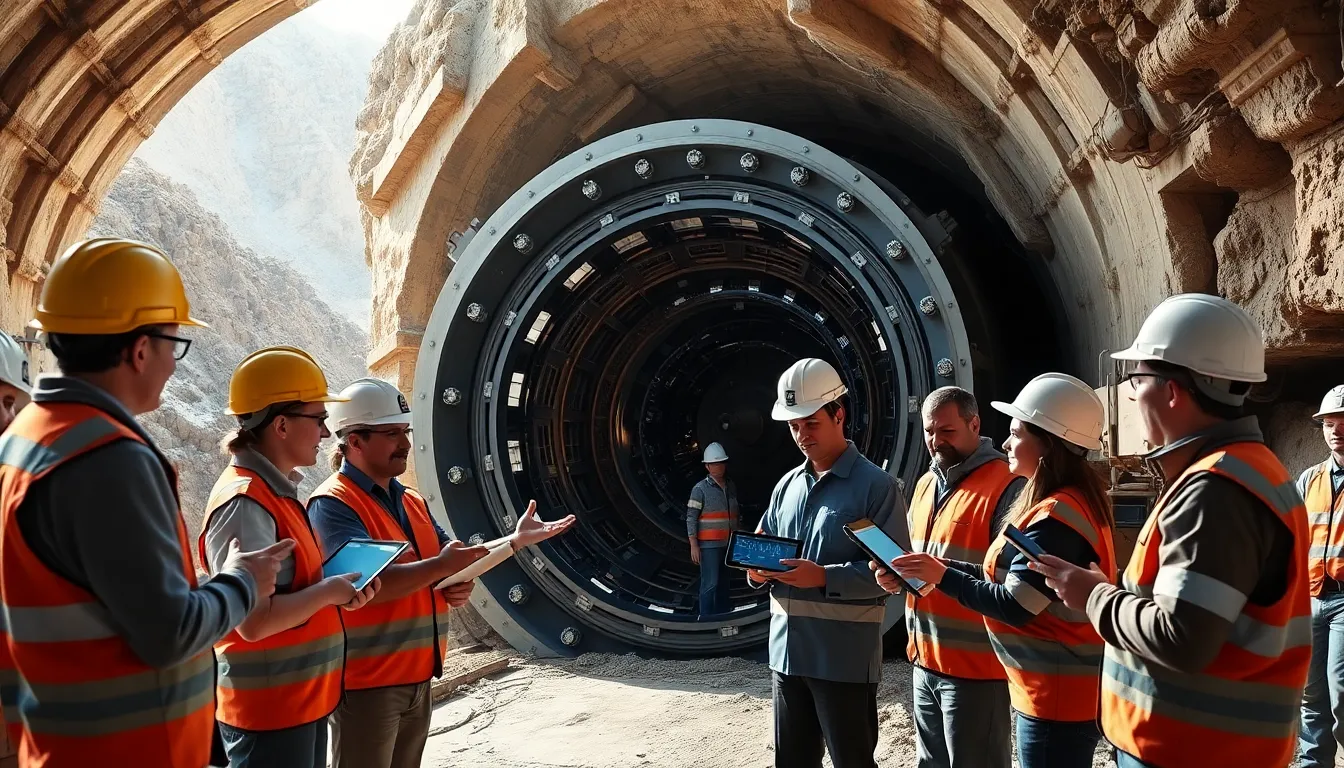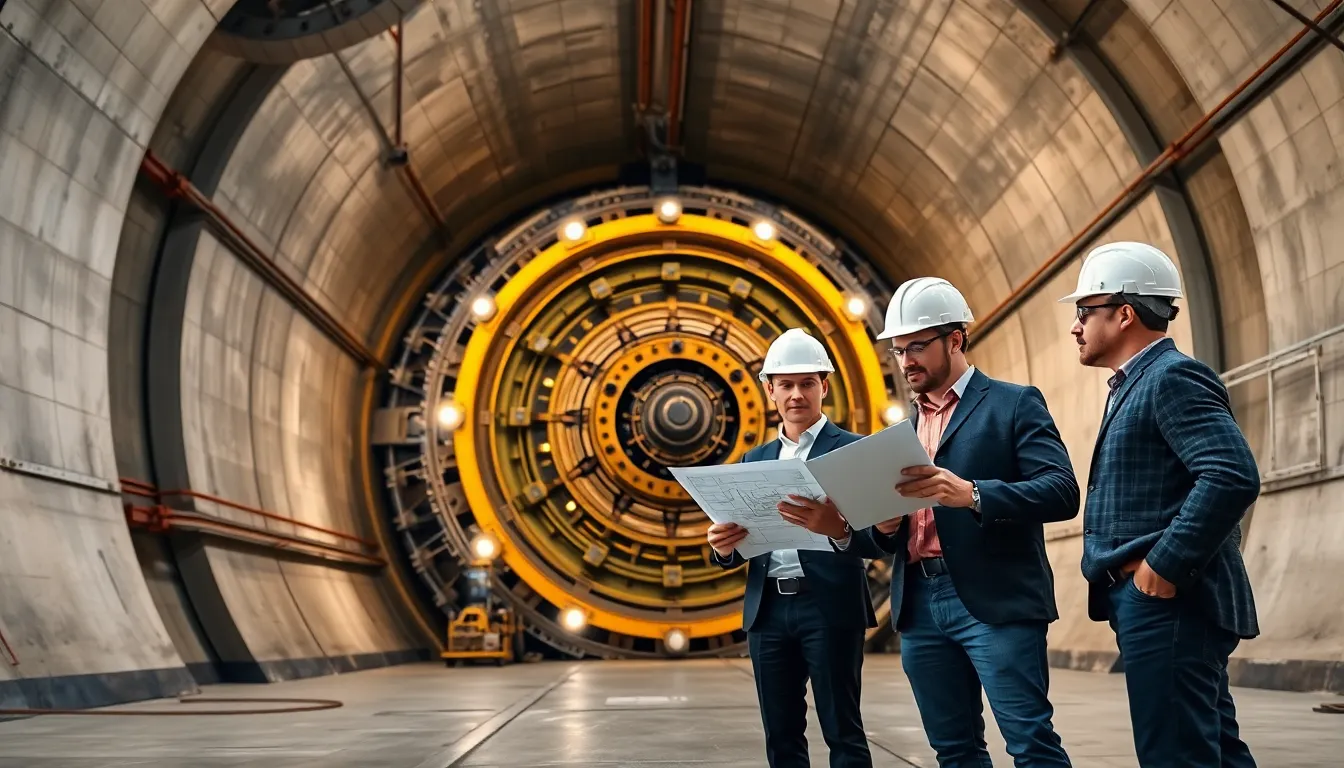Tunnels, they’re not just for cartoon characters hiding from the law. Did you know there’s a whole world beneath our feet bursting with innovation, mystery, and a bit of dirt? Tunnelling and underground space technology are shaping how we build, transport, and even save the planet. Buckle up as we journey through the evolution, applications, challenges, and future of everything that lies below ground.
Table of Contents
ToggleOverview Of Tunnelling Technology

History And Evolution
Tunnelling has a history as rich as the minerals hidden underground. From ancient Egyptians creating rudimentary shafts to the modern marvels of today, the evolution is nothing short of spectacular. Early tunnellers relied on simple tools, but they laid the framework for future advancements. The Romans, in particular, were masters of tunnelling, using arches and durability to create lasting structures.
As time progressed, so did technology. The Industrial Revolution ushered in new machinery and techniques, drastically changing the landscape of tunnelling. Fast forward to the 20th century, and we see the introduction of Tunnel Boring Machines (TBMs), which can create tunnels through the most challenging conditions with impressive precision. These machines are the superheroes of tunnelling, capable of tunnelling through mountains, urban areas, and even under bodies of water.
Modern Techniques and Equipment
Today’s tunnelling technology is a marvel of engineering. The blend of robotics, computer software, and traditional techniques ensures efficiency and accuracy. Innovations such as Ground Penetrating Radar (GPR) allow engineers to assess underground conditions before even breaking ground. This minimizes risks and maximizes success.
Also, the use of TBMs has been refined to include various types such as the Earth Pressure Balance (EPB) TBM, designed specifically for soft soils. These machines ensure that the tunnel stays stable even when creating intricate pathways deep beneath the earth’s surface. The evolution continues, and we stand at the brink of even more advanced solutions.
Applications Of Tunnelling
Infrastructure Development
One of the primary applications of tunnelling technology is in infrastructure development. Cities are expanding, which often necessitates the construction of underground transport systems. Subways, underpasses, and pipelines are all crafted with precision to alleviate surface congestion. A well-planned tunnelling project not only enhances accessibility but also makes efficient use of space that might otherwise go unfurled.
Take, for instance, the London Underground, often referred to as the Tube. This enchanting subterranean world serves millions daily, showcasing the remarkable impact of tunnelling on urban life.
Environmental Benefits
Tunnelling isn’t just about improving transportation: it also plays a pivotal role in environmental conservation. By building underground, cities minimize their surface footprints, preserving green spaces and reducing habitat destruction. Also, underground infrastructure often leads to decreased traffic congestion, which can significantly lower air pollution levels. Tunnelling helps create a cleaner, more sustainable environment for future generations.
Challenges In Tunnelling Projects
Geological and Technical Challenges
Even though its various advantages, tunnelling comes with its set of challenges. Underground conditions are often unpredictable: geologists must evaluate rock formations, groundwater levels, and soil stability before commencing work. A miscalculation could lead to disastrous setbacks, making thorough research essential.
Besides geological uncertainties, the technology itself continues to evolve, meaning engineers frequently face a steep learning curve as they adapt to new tools and techniques. The need for ongoing training cannot be overstated, as staying ahead of technological trends is crucial for success in tunnelling projects.
Safety and Risk Management
Safety is paramount in tunnelling operations. The very nature of working underground poses significant risks, from cave-ins to gas leaks. So, rigorous safety measures must be implemented. Engineers undergo extensive training, and operations are heavily monitored to ensure compliance with safety standards. Besides, developing a robust risk management plan is vital before initiating any tunnelling project. Identifying potential risks and establishing clear contingency plans helps mitigate hazards.
The Future Of Underground Space Technology
Innovative Trends and Developments
Looking forward, the future of underground space technology is bright, showcasing a continuous stream of innovative trends. Smart tunnels equipped with sensors can monitor conditions in real-time, ensuring safety and efficiency. The rise of artificial intelligence is set to revolutionize project planning and execution, making tunnelling smoother than ever.
Also, the integration of renewable energy sources in underground systems illustrates a commitment to eco-friendly practices. Think solar panels lining tunnel interiors or even geo-exchange systems harnessing the earth’s temperature for energy efficiency. This future promises more than just advancement: it ensures sustainability as a core principle.
Sustainable Practices in Tunnelling
Sustainability has become a non-negotiable in modern tunnelling practices. Engineers are exploring avenues to minimize waste production and maximize recycling efforts. Techniques like the use of eco-friendly materials and waste-to-energy processes are becoming the norm rather than the exception. Also, confined space resources are being utilized to harness energy more effectively while maintaining minimal environmental disruption.






